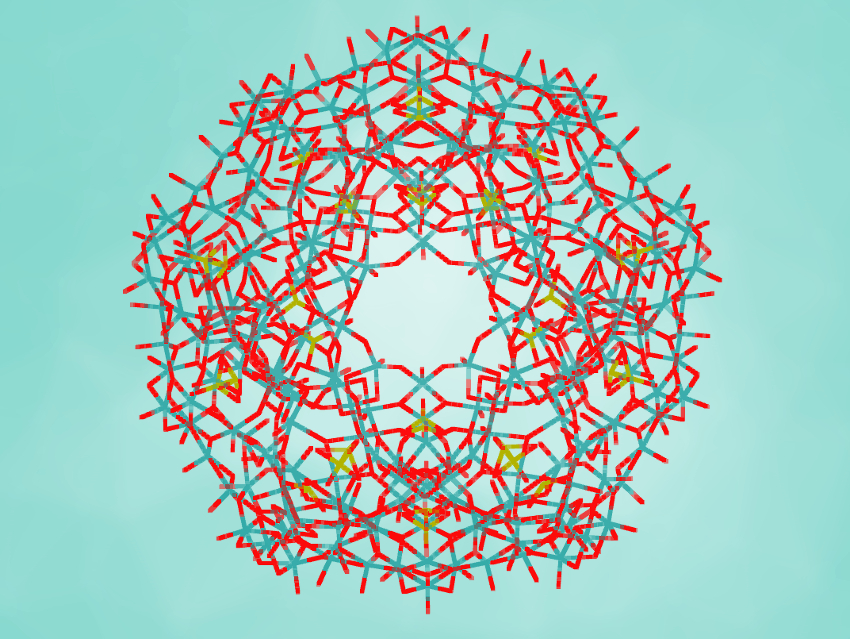Building large, hollow, dodecahedral cages from inorganic building blocks is challenging. This is due to their large cavity, which lessens structural stability. It also is difficult to find building blocks that provide the angles and connectivities required to build the edges of the twelve pentagons that make up a dodecahedron. Polyoxometalates (POMs) are commonly used building blocks in inorganic chemistry, but large polyhedral cages with open sides and high symmetry made from POMs are still rare.
Shiping Yang, Shanghai Normal University, China, Jiang Liu, Nanjing Normal University, China, Ya-Qian Lan, Nanjing Normal University and South China Normal University, Guangzhou, China, and colleagues have synthesized a hollow Mo240-based dodecahedron with open sides (pictured). The cage was synthesized via a hydrothermal reaction between (NH4)6Mo7O24, CoSO4, and NH2NH2·2HCl in the presence of trace amounts of dilute H2SO4. The product has a formula of (NH4)21H+59–2x[MoV180MoVI60(OH)60O620–x(SO3)20–x(SO4)x], with approximately 337 additional H2O molecules per cage.
The team used X-ray crystallography to investigate the structure of the cage and found that it forms a dodecahedral structure with Th symmetry. It has a large inner cavity with a diameter up to 1.8 nm. This cage is composed of 20 [Mo6O22(SO3)]n−/[Mo6O21(SO4)]n− building blocks, which form three connections each at the corners of the cage, and 30 [Mo4O16]n− building blocks, which form the edges. According to the researchers, the compound is the highest-nuclearity hollow opening dodecahedral cage with a well-defined crystal structure known so far.
- Self-Assembly of Giant Mo240 Hollow Opening Dodecahedra,
Jiaomin Lin, Ning Li, Shiping Yang, Mingjie Jia, Jiang Liu, Xiao-Min Li, Lu An, Qiwei Tian, Long-Zhang Dong, Ya-Qian Lan,
J. Am. Chem. Soc. 2020.
https://doi.org/10.1021/jacs.0c06582




